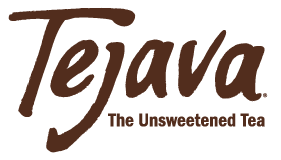Let’s face it, sugar tastes good and it’s easy to overindulge. Yet health experts have been telling us for years that we need to curb our sugar intake or else face negative health consequences. Is sugar that bad? How much is too much? Are there facts to back up the sugar revolt?
U.S. dietary guidelines are about the same as they were a decade ago. But we’re told from different sources that we’re still eating way too many foods chock full of sugar. Warnings about overeating sugar – as well as saturated fat, cholesterol, and salt – seem to have fallen on deaf ears for the most part.
The advisory panel that helps determine our dietary guidelines points to our love of sugary soft drinks and sweet snacks as being a major contributor to our dietary problems. Soft drinks contribute 47 percent of our added sugars and snack cakes and other sweet baked goods contribute 31 percent of added sugars and 18 percent of saturated fat. Because sugary drinks and snacks entice us in food stores, restaurants, convenience stores, and ads, sugar is “in our face.”
If you want to see just how much our sugar consumption has changed over the years, look at these statistics dating back to the early 20th century. In 1915, the average American consumed 17.5 pounds of sugar per year. In 2011, sugar consumption skyrocketed to 150 pounds. That’s a staggering increase –granted, that’s a gap of almost 100 years.
Why Sugar Gets a Bad Rap
For one, some of us crave sugar like an addiction. But is sugar addictive? Is the desire to eat sugar merely a strong liking or a real addiction? No studies have been able to answer that question definitively, but animal research studies have discovered that sugar triggers changes in the pleasure centers of the brain.
What makes sugar so irresistible to some people may be a combination of tickling those brain pleasure centers and the enticing flavor. Sugar can be difficult to resist, making it an uphill battle for some of us to cut down. Sugar also delivers a quick energy boost as it’s rapidly absorbed into our bloodstream. That quick energy is another reason we like it so much.
How can something that tastes so good be so bad? There are several reasons why the experts caution us from consuming too much sugar:
High in calories. Sugar is calorie dense. One teaspoon of sugar isn’t so bad, but sugary drinks are loaded with the sweet stuff. For instance, a 12-ounce can of Coca-Cola has about 39 grams of sugar and 140 calories. Want to “supersize” that drink? A 32-ounce Big Gulp cup (really 29 grams if you include the 4 ounces of ice) weighs in at 91 grams of sugar for a hefty 364 calories. These drinks can add on the pounds, not to mention the quantity of sugar.
Increased blood sugar. A risk factor for diabetes and heart disease, increased blood sugar affects blood sugar levels. Because diabetics produce insufficient insulin or their condition is resistant to it, eating too much sugar can cause their blood sugar to rise to unhealthy levels. As for heart disease, a significant relationship exists between excessive sugar and increased risk of dying from cardiovascular disease, according to The Journal of the American Medical Association.
Inflammation. Sugar is a refined carbohydrate. In fact, it’s all carbohydrates. Carbohydrates can contribute to inflammation, the underlying cause of many chronic diseases. A study of 75,000 healthy women in the US found that those who consumed high amounts of refined carbohydrates had up to a 98 percent greater risk of heart disease compared to those who consumed lower levels.
Nutritional void. Sugar contains no vitamins, minerals or fatty acids. In other words, sugar is empty calories. Sugar can act as a replacement for foods that would be more nutritious, so you’re swapping out sugar for nutrition. When you’re sipping your favorite sugary drink, you’re getting zero nutrition, just sugar and water. Besides increasing the risk of heart disease and Type 2 Diabetes, you could be on a path toward malnutrition.
Fatty liver. Most of the sugars we eat (sucrose) are made from two types of smaller sugars, glucose and fructose. Glucose can be absorbed from our GI track, but fructose must be processed by the liver. An overload of fructose can make the liver convert fructose to fat, putting the liver at risk for accumulating visceral fat – the fat that surrounds your liver.
How Much Sugar is Too Much?
So how much sugar is considered ok? U.S. Dietary Guidelines for Americans recommend limiting added sugars to no more than 10 percent of your total daily calories – about six teaspoons (24g of sugar) for women and nine teaspoons (36 g of sugar) for men. Based on the average sugar intake statistics from a few years back, we’re consuming an average of 20 teaspoons daily. How do you know how many grams are in a teaspoon? About 4 g of sugar is in a teaspoon.
Justifying the Revolt
We have many reasons to support reducing our sugar consumption, as mentioned. The effect on our health is confirmed in the findings of a 2010 global report on the impact of sugar-sweetened beverage consumption. The report estimated that sugar-sweetened beverages (sugar sweetened soda, fruit drinks, sports/energy drinks, sweetened iced tea, or homemade sugary drinks with at least 50Kcal/8oz) may be responsible for:
- 184,000 deaths across the globe every year
- 133,000 deaths from diabetes
- 45,000 deaths from cardiovascular disease
- 6,450 deaths from cancer
Is the sugar revolt valid? The consensus is yes. The health community thinks so, and studies and health reports back them up.
So, what can you do about sugar? Use moderation and common sense. Reduce adding sugar in foods and instead of a sweet snack, eat fruit because the fiber in fruit can help slow the absorption. And instead of reaching for sugar-sweetened iced teas, grab a bottle of Tejava tea. All our teas are unsweetened and contain natural flavors, making them sensible and refreshing ways to cut back on sugar.




